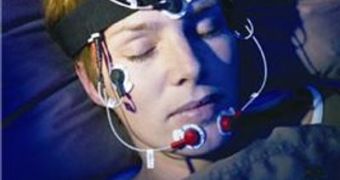Sleep studies are always difficult to conduct, as test participants need to be monitored in conditions mostly equivalent to their natural environment. However, specialized equipment can only be used in the labs, which means that people undergoing the tests need to be there when they sleep. This cumbersome and rather uncomfortable process could soon be replaced by a new generation of wireless devices, which the participants could wear in the comfort of their own homes, thus enabling researchers to have remote access to their sleep parameters.
The innovation was presented by the Interuniversity Microelectronics Center (IMEC) and its research affiliate Holst Center on September 2nd, at the IEEE EMB Conference, held in Minneapolis, Minnesota. The wireless sleep stage system could be the first able to enable scientists to conduct early screenings of abnormal sleep profiles outside specialized clinics. Tests on the product were conducted at the University Hospital Center (CHU), in Charleroi, Belgium, in a specialized sleep laboratory, and its performances compared with a commercially available reference system.
Sleep disorders are not at all uncommon. It is estimated that about one in six people around the world (roughly one billion humans) suffers from some sort of sleep disturbance, ranging from insomnia to chronic nasal congestion. Roughly ten percent (30 million) US residents are also believed to suffer from this type of issues. The number could, however, be even larger, considering that many of those experiencing such symptoms do not visit or tell their physicians about it. And this is where the new system sets in.
Because it is so small and miniaturized, it can be safely worn in the comfort of people's own homes, which would result in a higher degree of comfort in sleep studies. It consists of a head band featuring three sensor nodes, which measure the electrical activity in the brain, the eye movements, and the chin-muscle activity. These three factors were determined to be the most important by previous studies in assessing a person's sleep health. The collected signals are then centralized, separated and amplified by IMEC's proprietary ASIC (application-specific integrated circuit) technology, AlphaGalileo reports.

 14 DAY TRIAL //
14 DAY TRIAL //